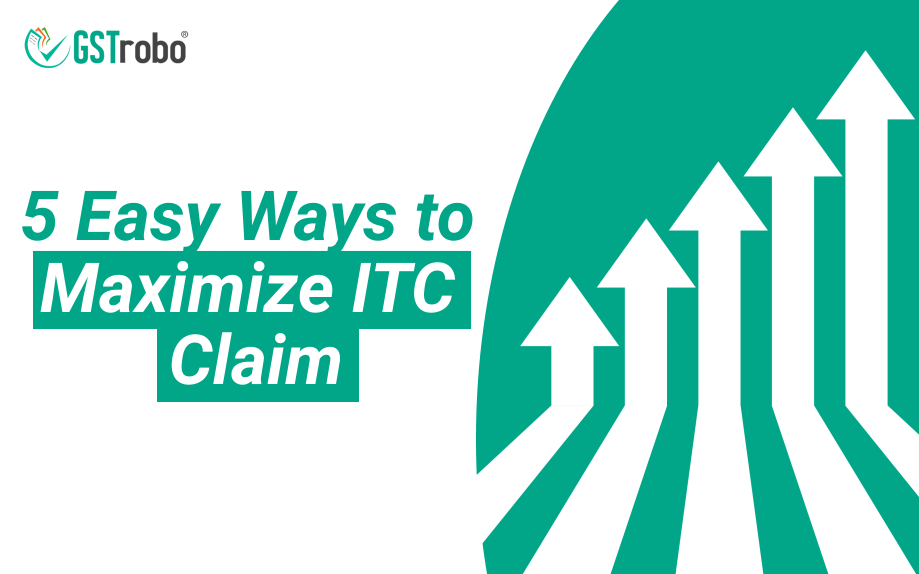Checklist to Maximize ITC Claim
As the name suggests Input Tax Credit (ITC) is the reduction of tax paid on the purchased inputs (goods or/and services) from liability paid on the output tax liability. But the question arises of how a taxpayer can maximize ITC claim? So, in this blog, we have created a checklist to maximize the ITC claim.

Checklist to Maximize ITC Claim
Here is a checklist to maximize ITC claim:
Determining ITC Eligible
The invoices accessible in GSTR 2B mirror the data as transferred by the supplier, which incorporates invoice details and tax details. Accepting GST data as a benchmark for figuring ITC eligible, the basic data focus which decides the eligibility of receipt for ITC design are
- Place of supply
- GST return filing status
- Covered under reverse charge
Howsoever, some additional factors also need to be considered to identify claimable ITC out of available ITC. GST Reconciliation ensures the data in your records matches with the GST returns uploaded by the supplier. Moreover, reconciliation also helps the taxpayer to claim eligible ITC by promptly indicating the mismatches if any.
Invoice Validity
At whatever point you gather an invoice from your suppliers or sellers, guarantee that it’s anything but a legitimate one with every basic detail imprinted on it. Moreover, you should also check if e-invoicing applies to your sellers or vendor. While there is no endorsed list for something very similar, it is prudent to take an affirmation from every one of your vendors or suppliers that can come convenient for any future ITC claim intricacies.
Checking Invoice in GSTR-2A
In a typical situation, an invoice will have IRN on it in any case, you should take note if an invoice is saved again by the supplier, IRN will not be auto-populated. Thus, guarantee that the IRN on the physical is valid.
- If the actual invoice is accessible with you, check whether details matching – reconciling
- If an invoice is canceled, it would not be accessible in GSTR 2A
Further, we likewise prescribe the suppliers to reconcile their e-invoices with auto-populated GSTR-1 to avoid duplicity and retain IRN.
Checking Invoice in GSTR-2B
This is the most pivotal viewpoint currently thinking about the new turns of events. Under e-invoicing, enlisting on IRP, and printing of IRN and QR code on the invoice is important. Hence, it becomes quintessential that the supplier additionally transfers the invoice on the GST portal before the 12th by filing his GSTR-1. The invoice data will show up in GSTR 2B just if the counterparty has documented their invoices.
Follow-up for Missing Invoices
There might be situations where you have recorded invoices in your purchase register and they are not reflecting in your GSTR 2A or 2B. In such a situation, you need to circle back to the seller or vendor promptly so the missing invoices can be transferred on schedule and the GST return is filed on schedule. Sending messages in mass and denoting the invoices which are being followed up are a few apparatuses that can make this interaction productive.
Conclusion
So, using the above 5 easy ways one can maximize ITC claim with an appropriate GST reconciliation software. GSTrobo® advance GST reconciliation tool is an AI-enabled solution that will help you to maximize ITC claim by reconciling all the hidden mismatches.
